5 tactics for defining your target audience
Whether you own a shop on the road side or you own a big company, you need to understand your customer if you want to maximise your sales. Who are you selling to? Why should they buy your product? What do they stand to gain?
Defining your target audience means understanding who they are and what works for them. It allows you to understand what your community wants and what motivates them to act. It gives you an insight on what to create and the right personality and style to entice your target audience to buying your product or service.
Here are five simple things you can use in defining who your targets are and ensuring your marketing or sales materials deliver on the bucks spent.
One of the most straightforward ways to define your audience for a marketing campaign is through demographic segmentation. Demographics separate a market by indicators such as age, gender, education level and income. The type of products we purchase, how much we spend and how we purchase is largely influenced by demographic factors. Demographics are used to divide a large population into specific sub groups based on a range of commonly available variables. Using demographic segmentation gives you the opportunity to take advantage of easily accessible census data.
Psychographic segmentation gives you the opportunity to establish and look into emotional features, allowing you to connect with your audience’s values and lifestyle on an emotional level. Psychographic segmentation separates a market by lifestyle, personality traits, values and the beliefs of consumers. Psychographics looks further into the mental model of your audience and gives you an accurate insight of your audience as a person. Using psychographics will give you a better understanding on your audience’s interests and lifestyle.
Geographic segmentation is the process of dividing your audience based on geographic units such as countries, states, counties, cities and communities. In comparison to the other methods, geographic segmentation is much more straightforward. This method is particularly favorable for video marketing campaigns looking to appeal to a wide variety of people in a particular place and not a certain type of person. Combining geographic segmentation and other forms allows you to understand individual’s specific needs and preferences of your audience in a specific location.
This form of segmentation gives you insight into your audience’s specific behavior patterns. Behavioral segmentation separates a market based on their knowledge, attitudes, and uses and buying habits to the product or service. As this approach focuses on your audience’s behavior, you can take advantage of the information gained about their buying habits. Understanding what motivates your audience and their purchasing timeline gives you valuable information to tailor your marketing approach thus having a greater appeal.
Who are your competitors targeting? Who are their current customers? Don’t go after the same market. Do your homework thoroughly. You may find another niche market they are overlooking.
Clearly defining your audience makes all the difference when you’re creating content.
Culled from Moovly.com












